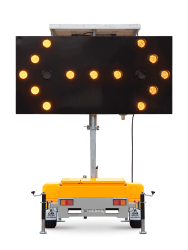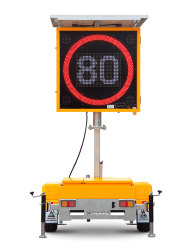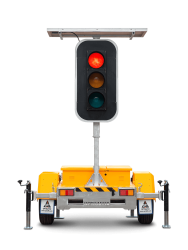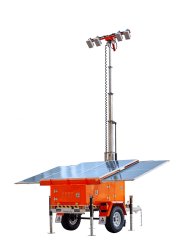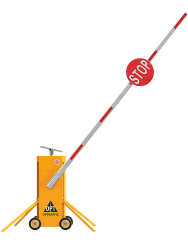
Exploring the Basics of Arrow Boards
What Are Arrow Boards?
Arrow boards are essential tools used in traffic management to provide clear and visible directional information to drivers. These boards typically consist of a series of lights arranged in arrow formations, which can be programmed to display various directional signals. The primary purpose of arrow boards is to guide motorists safely through work zones, detours, or any other road conditions that require special attention.
Definition and Purpose
The main function of arrow boards is to communicate important information to drivers, such as lane closures, upcoming construction zones, or changes in traffic patterns. By displaying specific directional cues, these boards help reduce confusion and enhance overall road safety for both drivers and construction workers.
Types of Arrow Boards
There are different types of arrow boards designed to meet varying traffic management needs. Some common variations include Type A, Type B, and Type C arrow boards. Each type differs in size, visibility distance, and intended use cases. For example, Type B arrow boards are typically used for standard roadwork applications with specific size and visibility requirements.
Importance in Traffic Management
Arrow boards play a crucial role in maintaining order and safety on the roads by effectively communicating vital information to drivers.
Enhancing Road Safety
One of the primary benefits of arrow boards is their ability to enhance road safety by providing advanced warnings about potential hazards or changes in traffic flow. This proactive approach helps reduce the risk of accidents and ensures smoother traffic flow during challenging conditions.
Applications in Road Work Zones
In road work zones, arrow boards are instrumental in guiding motorists around construction activities while ensuring the safety of both workers and drivers. Their clear and visible displays help minimize confusion and contribute to the efficient flow of traffic through these areas.
By understanding the fundamental aspects and significance of arrow boards, it becomes evident how these devices are integral components in maintaining safe and organized traffic systems.
Understanding the 2009 Edition Part 6 Figure 6F-6
The 2009 Edition Part 6 Figure 6F-6 sets forth specific standards and specifications for advance warning arrow board displays, outlining key requirements and intended use cases.
Overview of the 2009 Standards
Key Specifications
The 2009 standards for advance warning arrow boards encompass precise specifications related to their design and functionality. These include requirements for minimum display size, visibility distance, and the number of elements to ensure optimal legibility and effectiveness in conveying directional information to motorists.
Intended Use Cases
In addition to defining technical specifications, the 2009 standards outline the intended use cases for advance warning arrow boards. These encompass a wide range of scenarios, including road work zones, detours, lane closures, and other situations where clear and visible directional guidance is essential for maintaining safe and efficient traffic flow.
Detailed Breakdown of Figure 6F-6
Advance Warning Arrow Board Display Specifications
Figure 6F-6 provides a detailed breakdown of the display specifications required for advance warning arrow boards. This includes specific dimensions, color requirements, and arrangement guidelines aimed at maximizing visibility and comprehensibility for drivers approaching these traffic control devices.
Operating Modes and Their Significance
Moreover, the figure delineates various operating modes that arrow boards can utilize to convey different types of directional information effectively. Understanding these operating modes is crucial as they play a significant role in adapting arrow board displays to specific traffic conditions and ensuring their relevance in diverse traffic management scenarios.
By delving into the specifics outlined in the 2009 Edition Part 6 Figure 6F-6, it becomes evident how these standards aim to establish clear guidelines for the design, deployment, and operation of advance warning arrow boards in various traffic management contexts.
Delving into the USA Arrow Boards Standard
As traffic management continually evolves, the United States has established specific standards for arrow boards to ensure optimal safety and efficiency on roadways.
Current Standards for Arrow Boards in the USA
Minimum Size and Visibility Requirements
The USA arrow boards standard outlines precise specifications regarding the minimum size and visibility requirements for these essential traffic control devices. These standards emphasize the importance of visibility by setting specific criteria for display dimensions and brightness levels to ensure that arrow board signals are clearly visible to motorists from a considerable distance. Additionally, they define minimum size requirements to guarantee that the directional information displayed is easily discernible, contributing to enhanced road safety.
High-Speed vs. High-Volume Roadways
Furthermore, the standards differentiate between high-speed and high-volume roadways, taking into account the unique challenges posed by each type of roadway. For high-speed roadways, where vehicles travel at elevated speeds, the arrow board standards incorporate additional specifications to address the heightened velocity of traffic flow. Conversely, for high-volume roadways with substantial traffic density, the standards focus on optimizing visibility and ensuring that arrow boards effectively communicate directional information amidst heavy traffic conditions.
Technological Advancements and Updates
Innovations in Arrow Board Technology
In response to technological advancements, the USA arrow board standard reflects innovations in arrow board technology designed to elevate their functionality and effectiveness in traffic control. These advancements encompass improvements in display clarity, energy efficiency, and adaptability to diverse environmental conditions. By embracing technological innovations, arrow boards can better fulfill their role as crucial components of comprehensive traffic management systems.
Impact on Traffic Control and Safety
The integration of advanced technologies within arrow boards has a profound impact on overall traffic control and safety measures. Enhanced display capabilities contribute to improved communication with drivers, promoting greater awareness of changing road conditions and potential hazards. Moreover, technological updates enable more efficient deployment of arrow boards in various scenarios, ultimately enhancing their contribution to maintaining safe and organized traffic flow.
Comparing and Contrasting the Two Standards
When examining the 2009 Edition Part 6 Figure 6F-6 and the USA Arrow Boards Standard, it becomes evident that while they share common objectives, there are also notable differences in their approach to arrow board specifications and requirements.
Similarities Between the 2009 Edition and USA Standards
Common Goals and Objectives
Both the 2009 Edition Part 6 Figure 6F-6 and the USA Arrow Boards Standard are aligned in their overarching goals of enhancing road safety, providing clear directional information to motorists, and contributing to efficient traffic management. These standards emphasize the importance of maintaining visible and comprehensible arrow board displays to guide drivers effectively through various traffic scenarios.
Shared Specifications and Requirements
In terms of specifications, both standards outline precise criteria for arrow board visibility, display clarity, and operational effectiveness. They prioritize the legibility of directional cues to ensure that motorists can discern crucial information from a distance. Additionally, both standards underscore the significance of technological advancements in improving arrow board functionality and adaptability within modern traffic management systems.
Key Differences and Their Implications
Technological Progress and Adaptation
One notable difference lies in the approach to technological progress. The 2009 Edition focuses on establishing fundamental display specifications for advanced warning arrow boards, emphasizing standardized requirements for size, visibility distance, and operating modes. In contrast, the USA Arrow Boards Standard integrates technological advancements as an integral aspect of its guidelines, reflecting a proactive stance toward embracing innovations that enhance arrow board performance in diverse traffic conditions.
Practical Applications in Modern Traffic Management
Another significant difference pertains to practical applications within modern traffic management. While both standards prioritize road safety and effective communication with drivers, the USA Arrow Boards Standard places greater emphasis on adapting arrow boards to evolving technological landscapes and addressing specific challenges posed by high-speed or high-volume roadways. This forward-looking approach acknowledges the dynamic nature of traffic control needs and seeks to optimize arrow board functionality accordingly.
By recognizing these similarities and differences between the two standards, stakeholders can gain valuable insights into evolving practices within traffic management while ensuring that arrow boards continue to fulfill their vital role in promoting safe and organized roadways.
Now let’s move on to summarizing these insights with key takeaways from our exploration of arrow board standards.
Key Takeaways
Summary of Insights
Upon delving into the standards and specifications for arrow boards, several key insights emerge, shedding light on their significance in traffic management.
Importance of Adhering to Standards
Adhering to established arrow board standards is paramount in ensuring the effective communication of directional information to motorists. By complying with precise specifications for display size, visibility distance, and operating modes, stakeholders can uphold the clarity and legibility of arrow board signals. This adherence ultimately contributes to enhanced road safety and the seamless flow of traffic through various scenarios, including work zones and detours.
Future Directions in Arrow Board Standards
The future trajectory of arrow board standards is poised to embrace ongoing technological advancements and evolving traffic management needs. Anticipated developments include further enhancements in display clarity, energy-efficient technologies, and adaptive features tailored to diverse environmental conditions. Moreover, future standards may place increased emphasis on addressing the specific challenges posed by high-speed roadways and optimizing arrow board functionality within these dynamic traffic environments.

